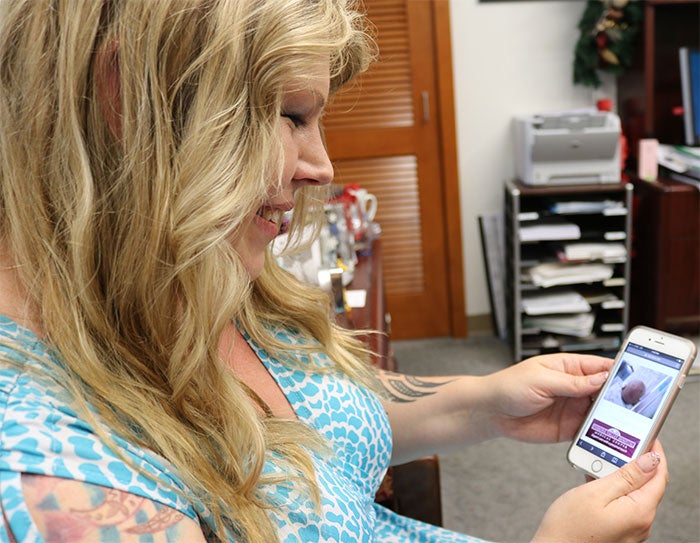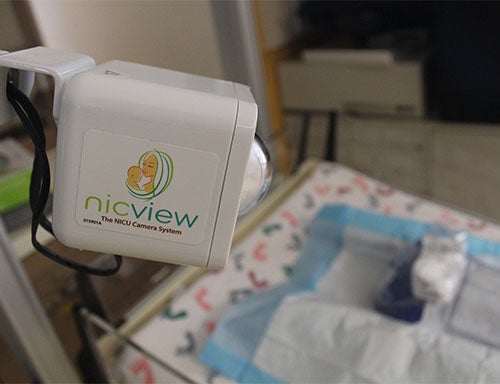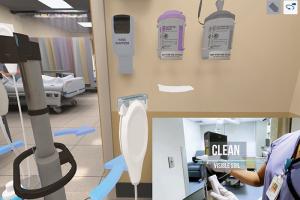Tech talk: Live streaming from the NICU, Blockchain and data analytics

The NicView camera system helps parents stay connected to newborns staying in the NICU.
Parents can check in on premature babies remotely 24/7
No loving parent wants to miss the first few moments of their child’s life. But for parents whose children are admitted into neonatal intensive care units (NICU), having to spend hours away from their babies' sides is a common occurrence.
Pomona Valley Hospital Medical Center (PVHMC) is trying to change that norm by helping parents stay connected to their newborns through technology. The hospital’s brand new NicView camera system allows parents to check in on their babies from the comfort of their homes or wherever an internet connection is available.

A camera is placed at each one of the Pomona Valley Hospital Medical Center's 53 NICU beds.
The hospital purchased cameras for its 53-bed Level III NICU facility and installed them over a four-week period beginning last month. The cameras, supplied by Natus Medical Inc., are mounted near the newborn’s hospital bed, giving parents a wide-angle view of their child. No software downloads are required, which means parents can simply use a username and password to log into a secure website and stream video through any device, such as a laptop or smartphone.
"Our NICU parents have expressed that they are overwhelmed with gratitude for this new technology that allows them to connect with their babes when they are unable to be by their bedside, whether that be due to work, travel distance or any other challenges," says Damien Williams, PVHMC’s NICU storeroom coordinator. "They feel emotionally reassured and comforted knowing they can see them whenever and wherever."
PVHMC purchased the system using a $100,000 donation from an annual wine tasting event held to benefit the hospital.
ONC Blockchain challenge asks Health IT community to think out of the box
The Office of the National Coordinator (ONC) for Health Information Technology is sponsoring a challenge that asks IT professionals to think of ways to use Blockchain technology in health care.
In the challenge, ONC is soliciting white papers on the technology and its potential use in health IT “to address privacy, security and scalability challenges of managing electronic health records and resources.”
A Blockchain is a data structure that can be timed-stamped and signed using a private key to prevent tampering. There are generally three types of Blockchain: public, private and consortium. Potential uses include:
- Digitally sign information
- Computable enforcement of policies and contracts (smart contracts)
- Management of Internet of Things devices
- Distributed encrypted storage
- Distributed trust
Between 12 and 15 white papers will be awarded a cash prize in the range of $1,500 to $5,000. Up to eight winners may be given the opportunity to present their paper at a Blockchain & Healthcare Workshop hosted by the National Institute of Standards and Technology Sept. 26-27.
UPMC takes stake in supply chain technology company
The University of Pittsburgh Medical Center (UPMC) formed an independent company, Pensiamo, to help hospitals improve supply chain performance through a comprehensive source-to-pay offering. The solution includes cognitive analytics with IBM Watson Health technologies. IBM is a minority owner of the new company.
"At a time when patients are demanding higher quality and value, traditional approaches to providing health care supply chain services are no longer sufficient,” says James Szilagy, who will transition from his current role as chief supply chain officer for UPMC to chief executive officer at Pensiamo. “The new company will combine the best of UPMC’s health care supply chain experience with IBM’s expertise in non-medical procurement services, as well as IBM Watson capabilities infused with UPMC’s domain expertise. The aim is to offer providers a supply chain management approach tailored to each institution’s specialties, patient population and other unique needs, and which will learn and respond over time to the changing needs of the business.”




